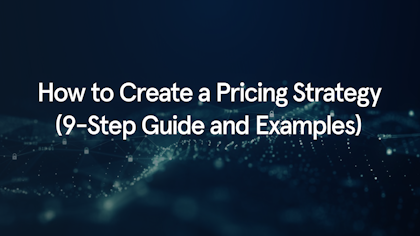Step 7: Decide if and when to use pricing tactics like discounting and promotionals
Promotions and discounts are tactical elements of pricing that need careful management in any go-to-market strategy. While promotional pricing (sales, coupons, volume discounts, etc.) can boost short-term volume or attract new customers, they must be designed to support – not undermine – the overall pricing strategy. Best-practice companies align promotions with their pricing structure and target them to the right customers.
In steps 1-6 you aligned your base pricing to customer segments and competitive position. Your focus can now turn to optimizing promotions to drive sales with minimal margin erosion or brand damage.
Rather than blanket discounts for everyone, consider using data on customer segments and purchase behavior to tailor promotions – offering the biggest incentives to customers who value them most or to stimulate specific behaviors. For example, a retailer might give loyal high-value customers an exclusive deal (to reward and retain them), instead of a broad coupon that many would ignore. It’s also vital to regularly review promotional effectiveness; many businesses discover a portion of promotions yield little incremental revenue or simply cannibalize full-price sales. Best practices include killing “bad” promotions that don’t profitably boost sales and doubling down on effective ones.
In a go-to-market context, a disciplined discounting strategy helps preserve the intended price positioning (e.g. premium brands avoid deep discounts that dilute their image) and maintains profitability while still allowing tactical flexibility to respond to market opportunities.
Checklist:
Step 8: Ensure pricing governance is in place
Even a brilliantly crafted pricing strategy can falter without strong execution and governance. Pricing governance refers to the processes, controls, and organizational ownership that ensure pricing is implemented consistently and optimized over time. Top companies invest in dedicated pricing functions or “pricing control towers” that oversee pricing decisions, guidelines, and performance.
For instance, a centralized pricing team can set list prices, establish discount approval rules, and coordinate between product, sales, and finance departments. A long-term pricing advantage – contributing significantly to profit – often stems from building such pricing capabilities and infrastructure.
Clear policies are key: define who can authorize discounts and on what criteria, ensure sales teams have guardrails (so they don’t erode margins in pursuit of volume), and use tools for quote management and price analytics. Leading companies also train their sales and channel teams in pricing strategy and value selling, so that frontline negotiators don’t resort to ad-hoc concessions that give away value. Setting up tiered discount limits (e.g. larger discounts require senior approval) is a common practice to balance agility with control.
In summary, pricing governance provides the framework to “set and get” the right prices – it aligns internal teams, prevents chaotic or inconsistent pricing in the market, and ensures the pricing strategy envisioned in the go-to-market plan is actually realized in every deal and transaction.
Checklist:
Step 9: Continuously optimize and refine
You’ve officially set your prices and are ready to enter the market. The last and final step of any good pricing strategy is to make sure you continue to optimize and refine your pricing. In other words, monitor performance and be ready to adjust.
For example, if sales are far exceeding targets, it might signal an opportunity to raise prices or reduce discounting; if a competitor launches a new discount campaign, a strategic response might be needed. Continuous improvement also means learning from on-the-ground execution: Are there patterns of discount requests pointing to unmet value needs? Which customer segments are most sensitive to price changes? By treating pricing as an ongoing experiment and adjustment cycle, you can ensure your pricing strategy and broader go-to-market plan stays relevant and effective over time, leading to sustained revenue optimization.
Checklist:
Conclusion
In summary, a robust pricing strategy encompasses a range of elements – from aligning with the value proposition and segmenting customers, to positioning against competitors, choosing the right pricing models, and executing with discipline. Industry leaders like McKinsey, BCG, and Bain consistently stress the importance of these fundamentals.
By following these relatively simple steps, you should be able to create your own best-practice pricing strategy and become better equipped to win in the market and achieve profitable growth.




















